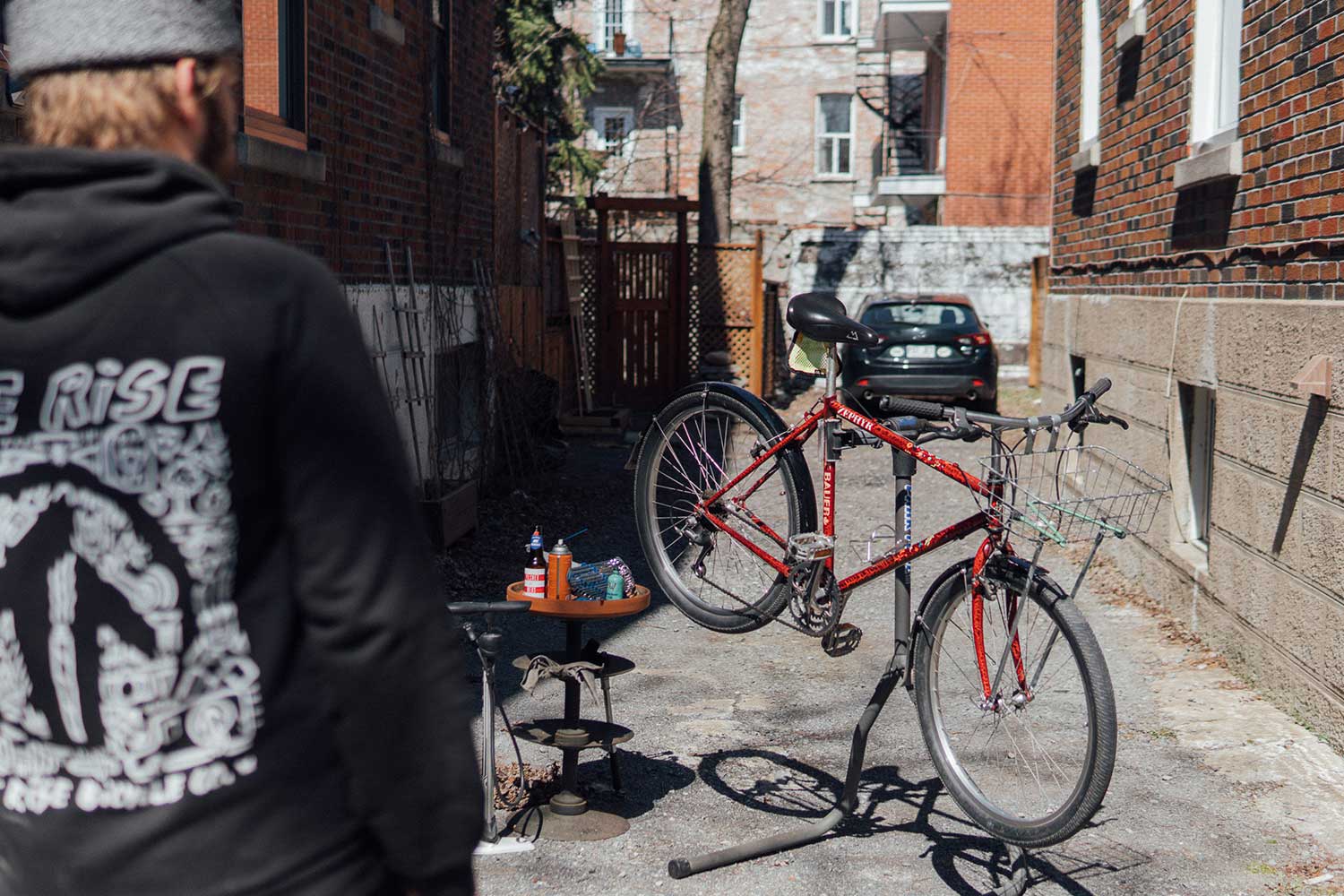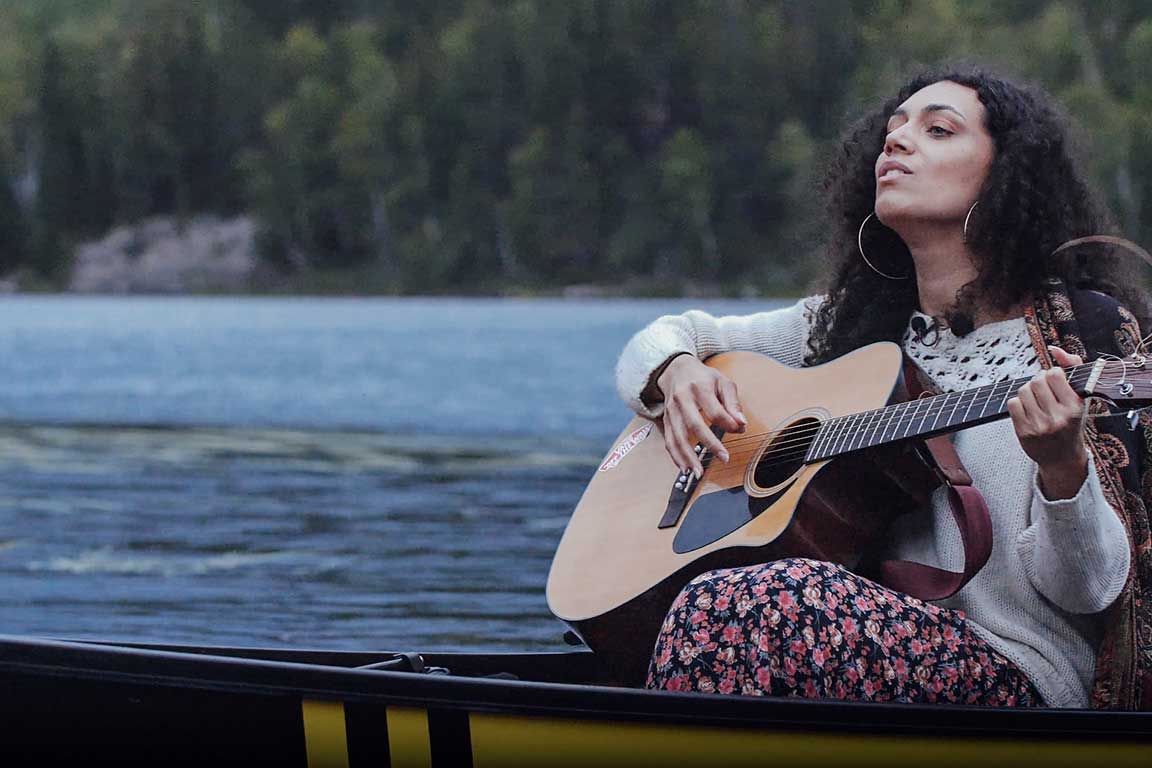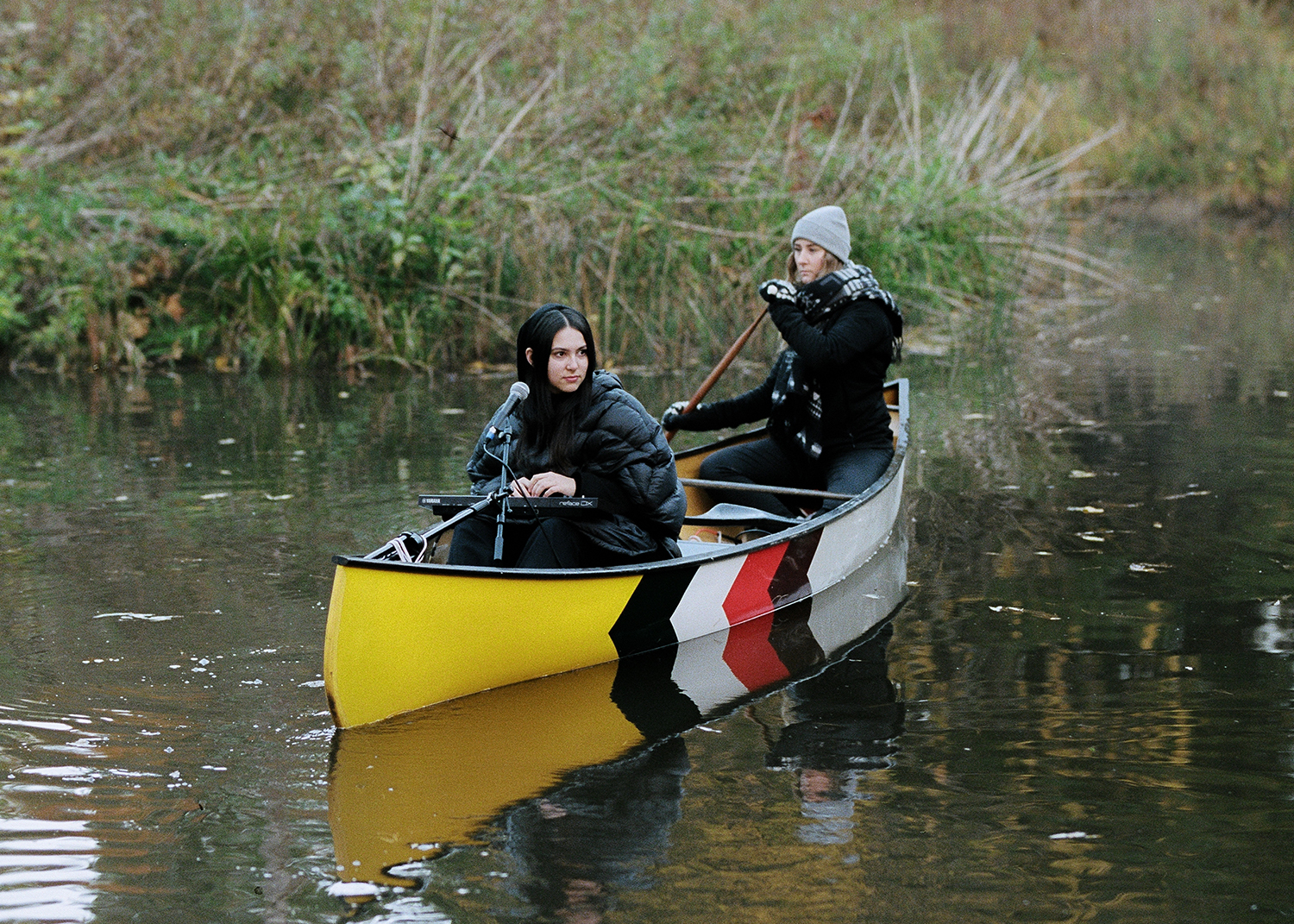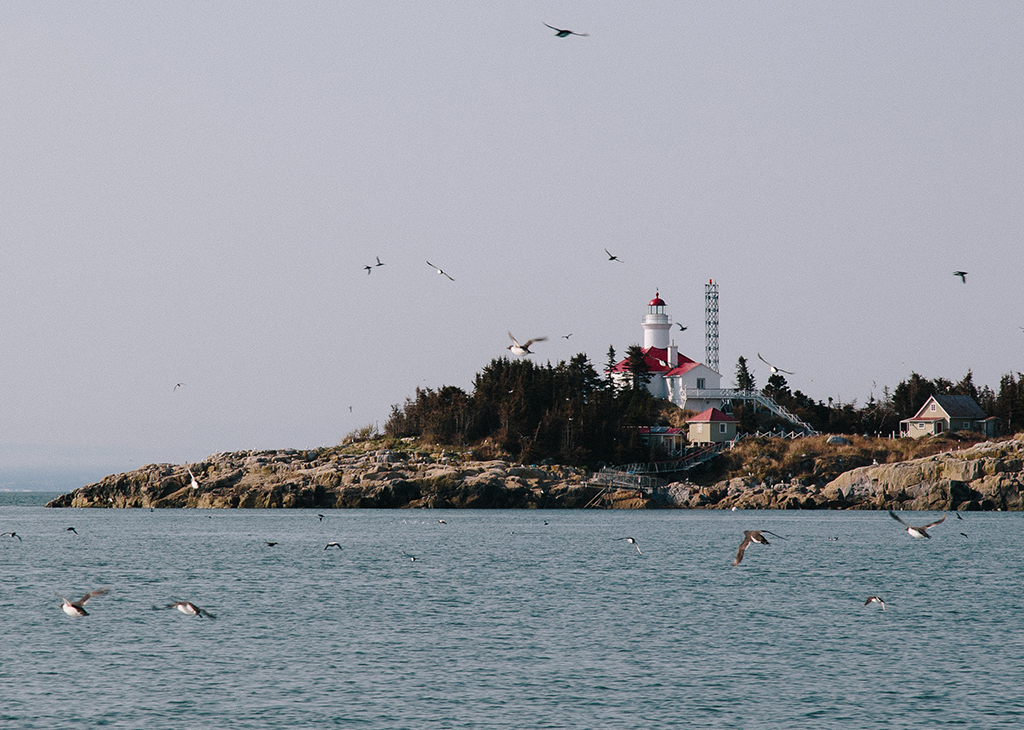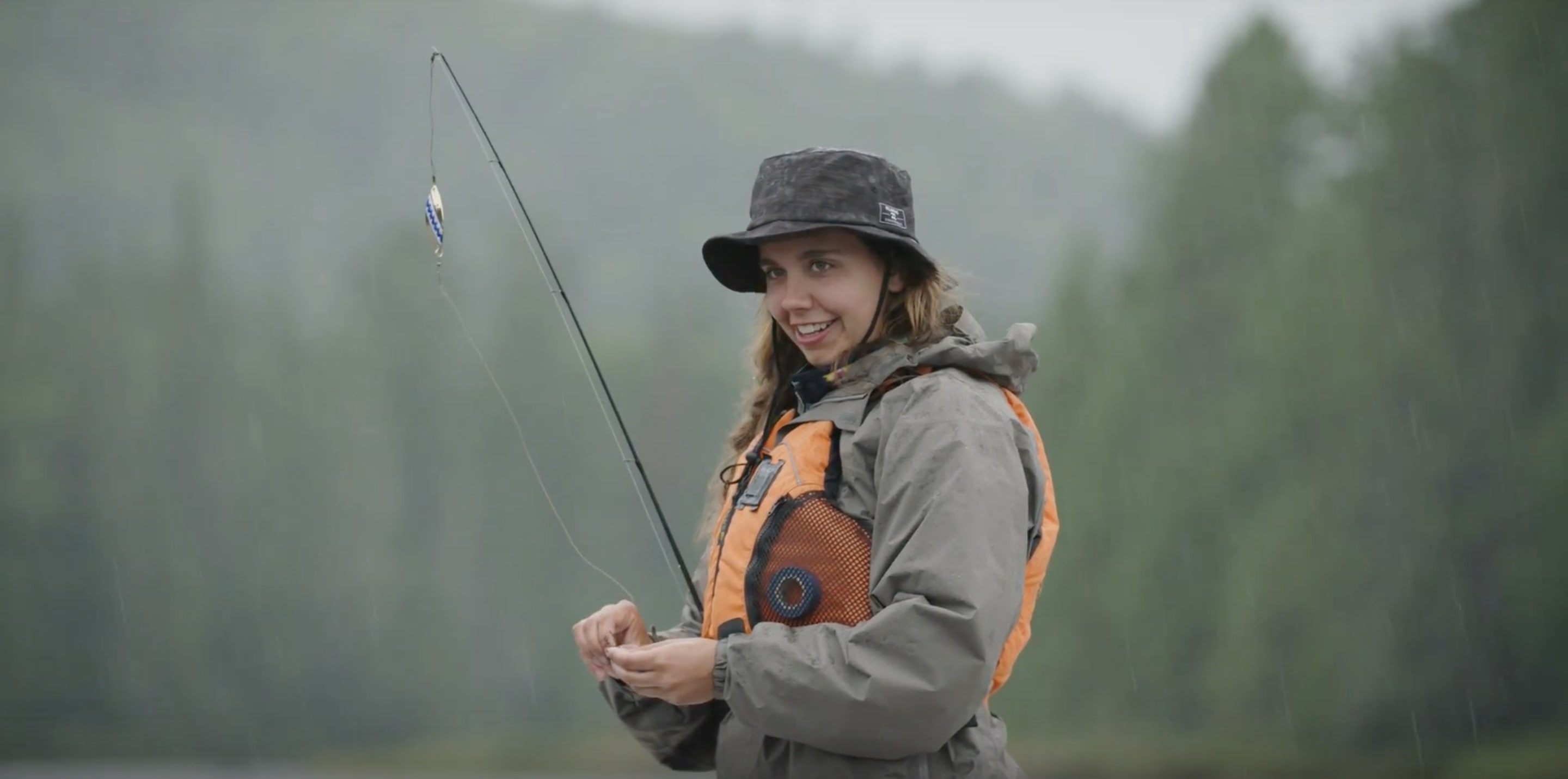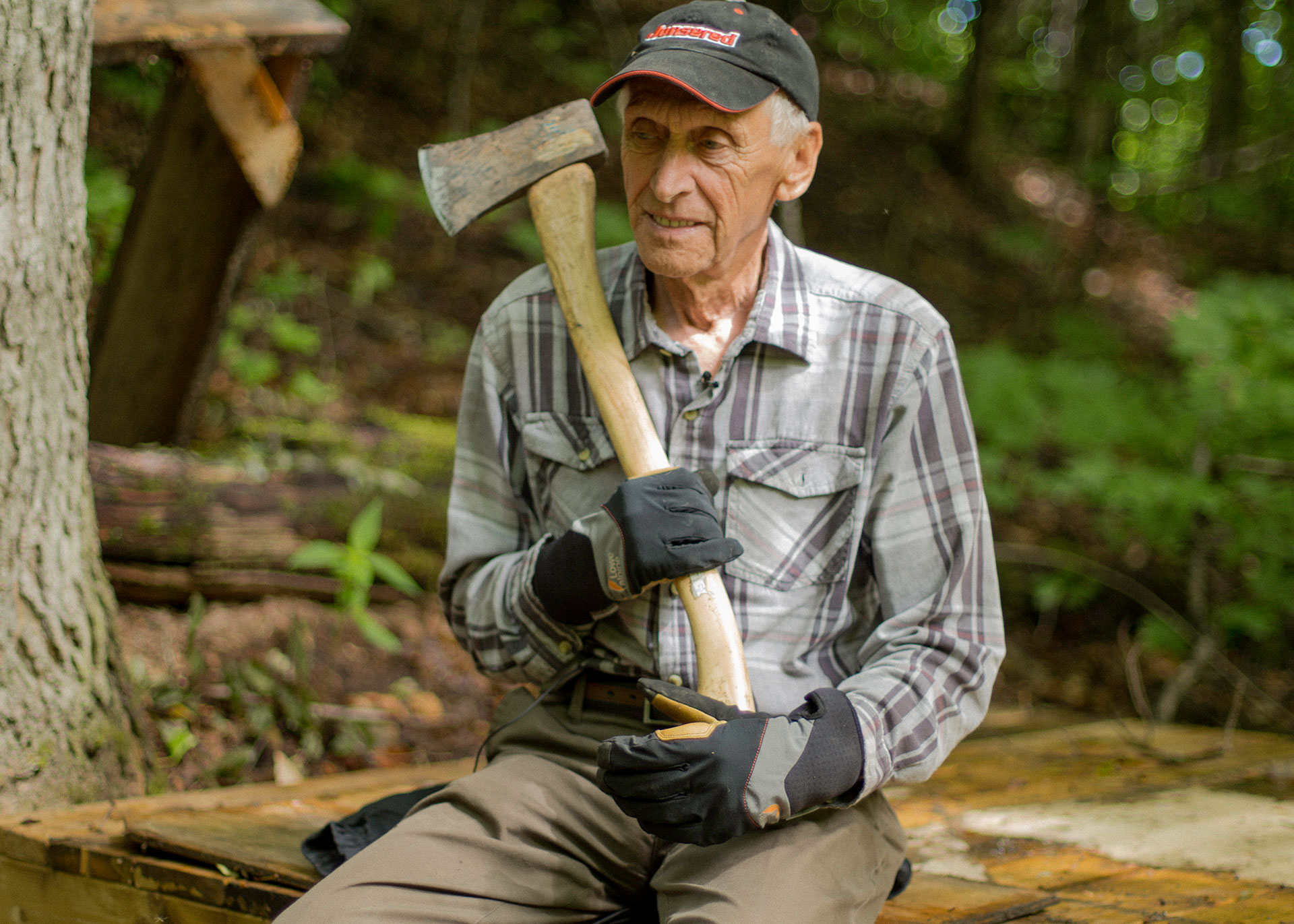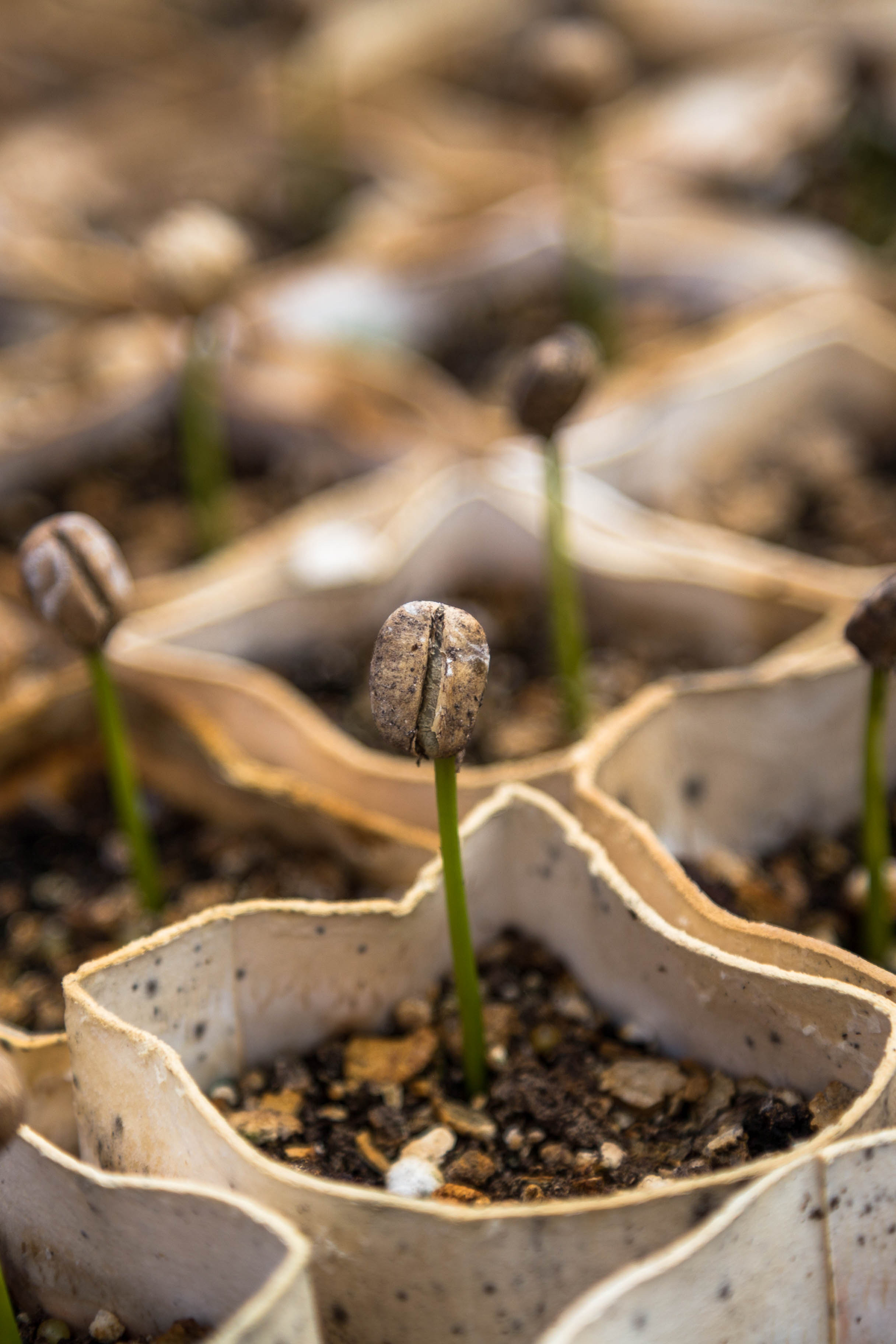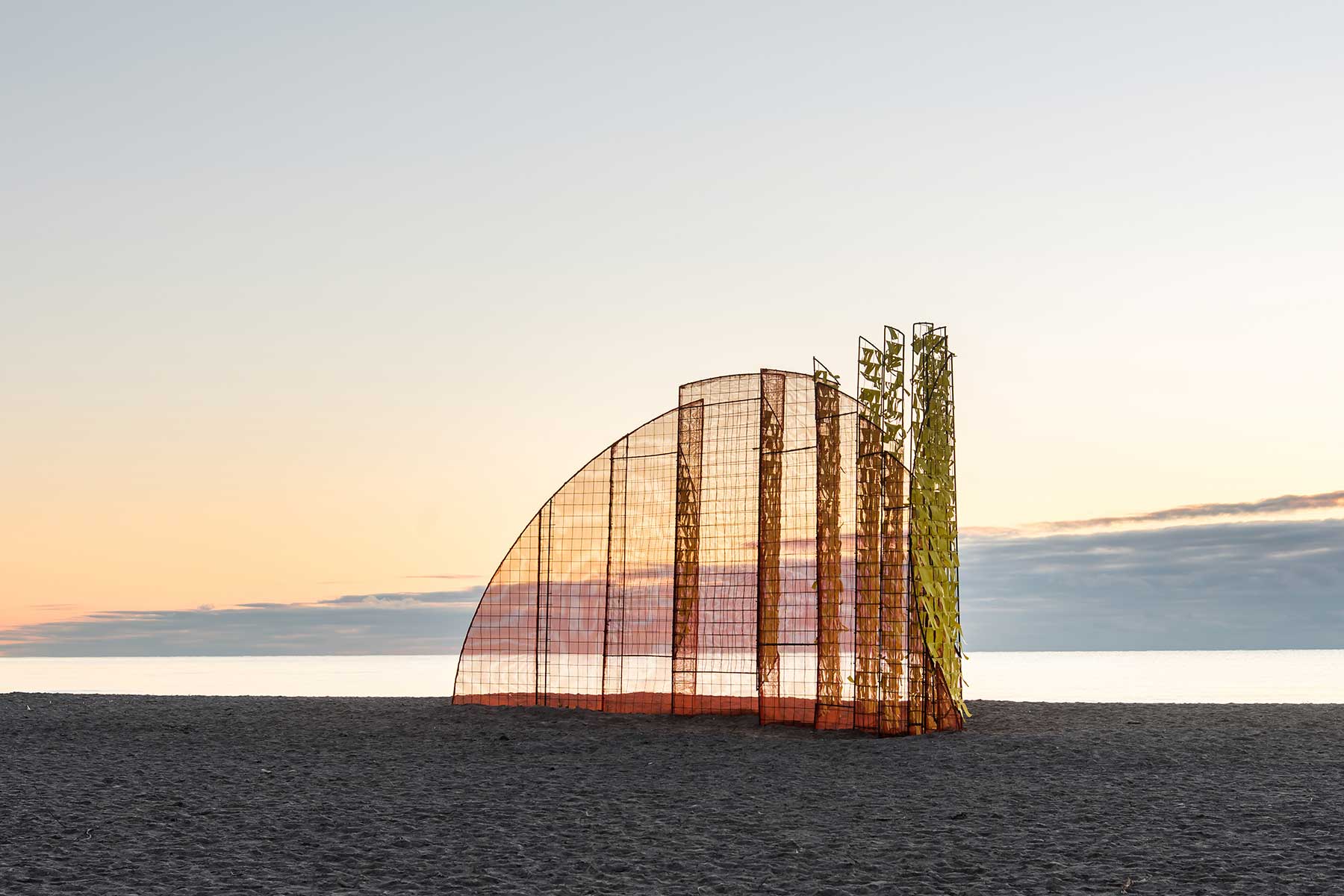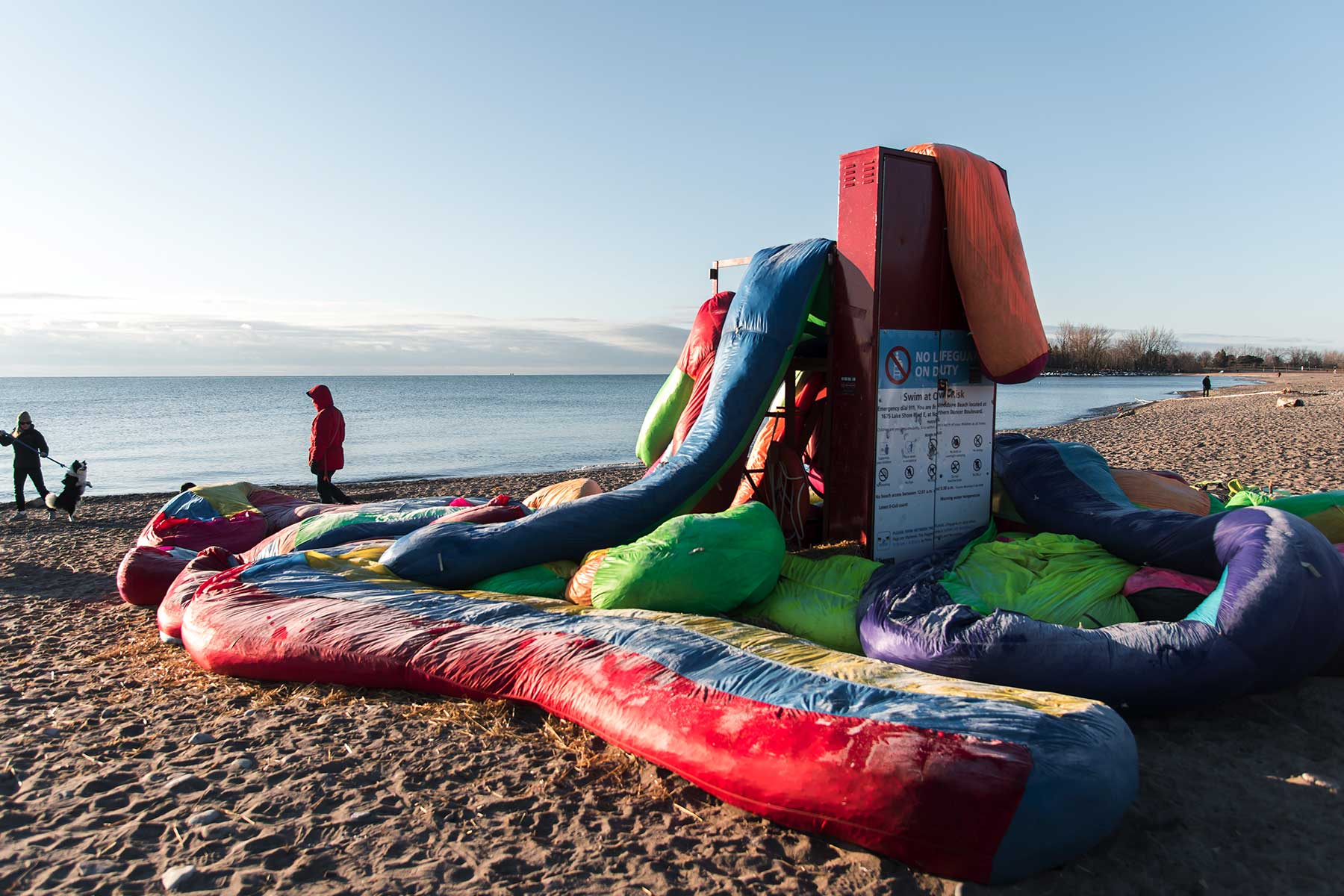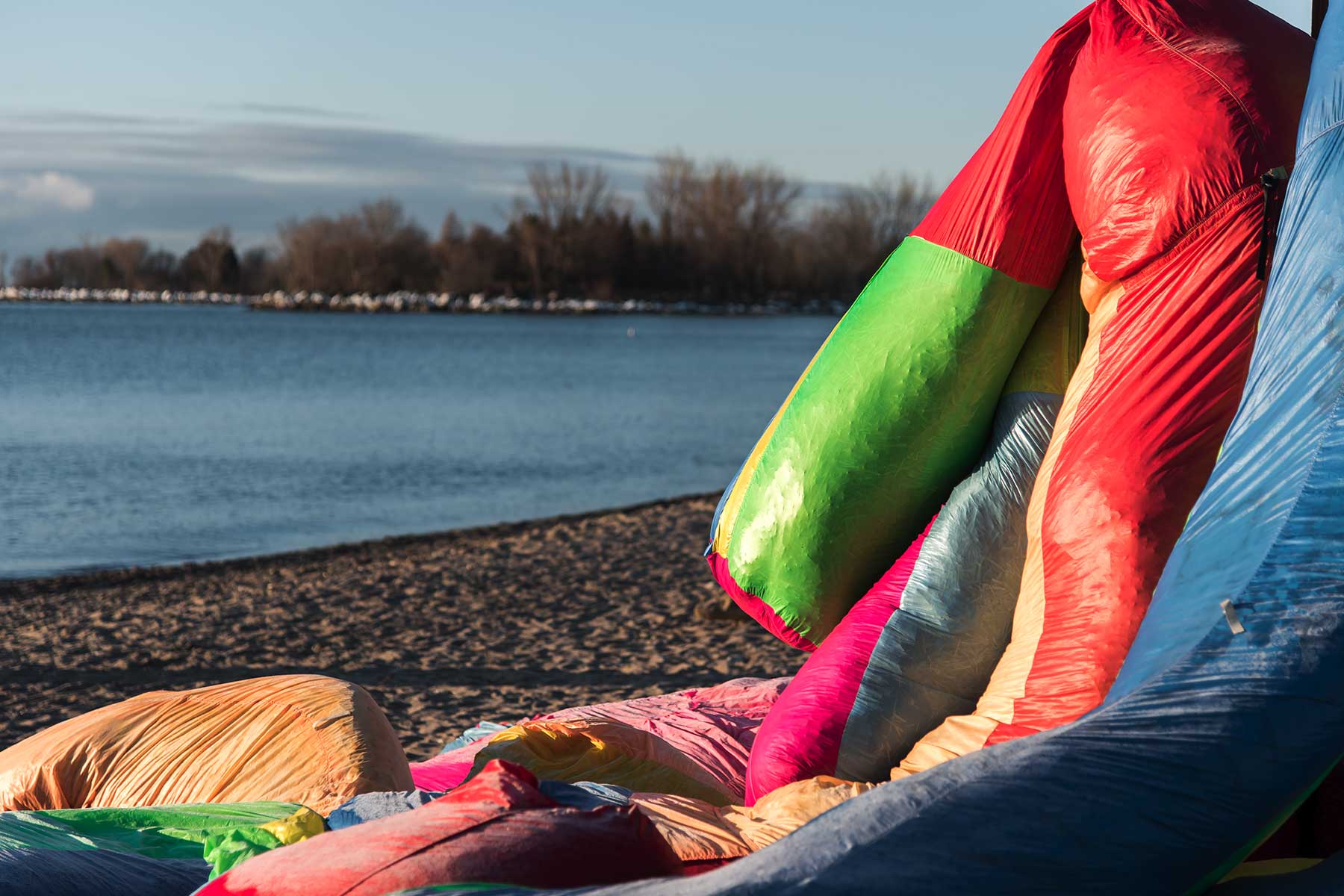Dispatches
Signs of Life
In a time of social distancing, Toronto’s Winter Stations exhibit provides an opportunity to reflect on how we gather around art and nature.
I wasn’t sure what to expect when I left my apartment to visit an interactive public art exhibition during a pandemic. The city’s indoor galleries had all already closed, and so, by default, Winter Stations became the only show in town. This year’s theme was “beyond the five senses,” which felt unintentionally ironic, given that we were being besieged by an invisible virus that forced us to keep our distance and not touch anything.
Winter Stations provides artists and designers an annual opportunity to reimagine the lifeguard stations on Toronto’s Woodbine Beach as playful, tactile installations that draw people to the beach in the coldest months of the year. But how much interaction would the works demand? I wondered whether I’d have to engage other visitors in a clumsy sort of predictive waltz, the way we did at the grocery store. Fortunately, the beach was almost empty and I was free to wander through the exhibition alone. I found myself trying to reconstruct the experiences of other visitors before me from traces left on the work, as though I was distilling the values of an extinct culture from its artifacts.
A large, semicircular wire frame covered in bright orange mesh protruded from the sand, and as I approached, I realized it was composed of multiple segments that only formed a cohesive shape when you were looking at them from a certain angle. From the other side, a bright yellow circle covered in bits of flagging tape would appear. In Cristina Vega and Pablo Losa Fontangordo’s Mirage, the two images were meant to represent a setting and rising sun. Their interlaced forms expanded and contracted with your movement in what seemed like an apt metaphor for the feeling of suspended time we’re living in.

Centennial College’s Beach Percussion Ensemble, on the other hand, was practically begging to be destroyed. The installation was made up of large bubblegum-coloured blocks threaded with cowbells that thrashed chaotically in the wind. Some blocks were outfitted with mallets and steel drums that were pockmarked and caved in from use. The didactic text invited visitors to tag the structure, and many accepted. Every viable surface was covered in graffiti, ranging from a mini mural of a Woodlands style bear to the words “Don’t worry be happy” scrawled ominously in red spray paint underneath a smiley face. The anarchic quality of the piece made it approachable, even as it took on the skin of an alleyway.
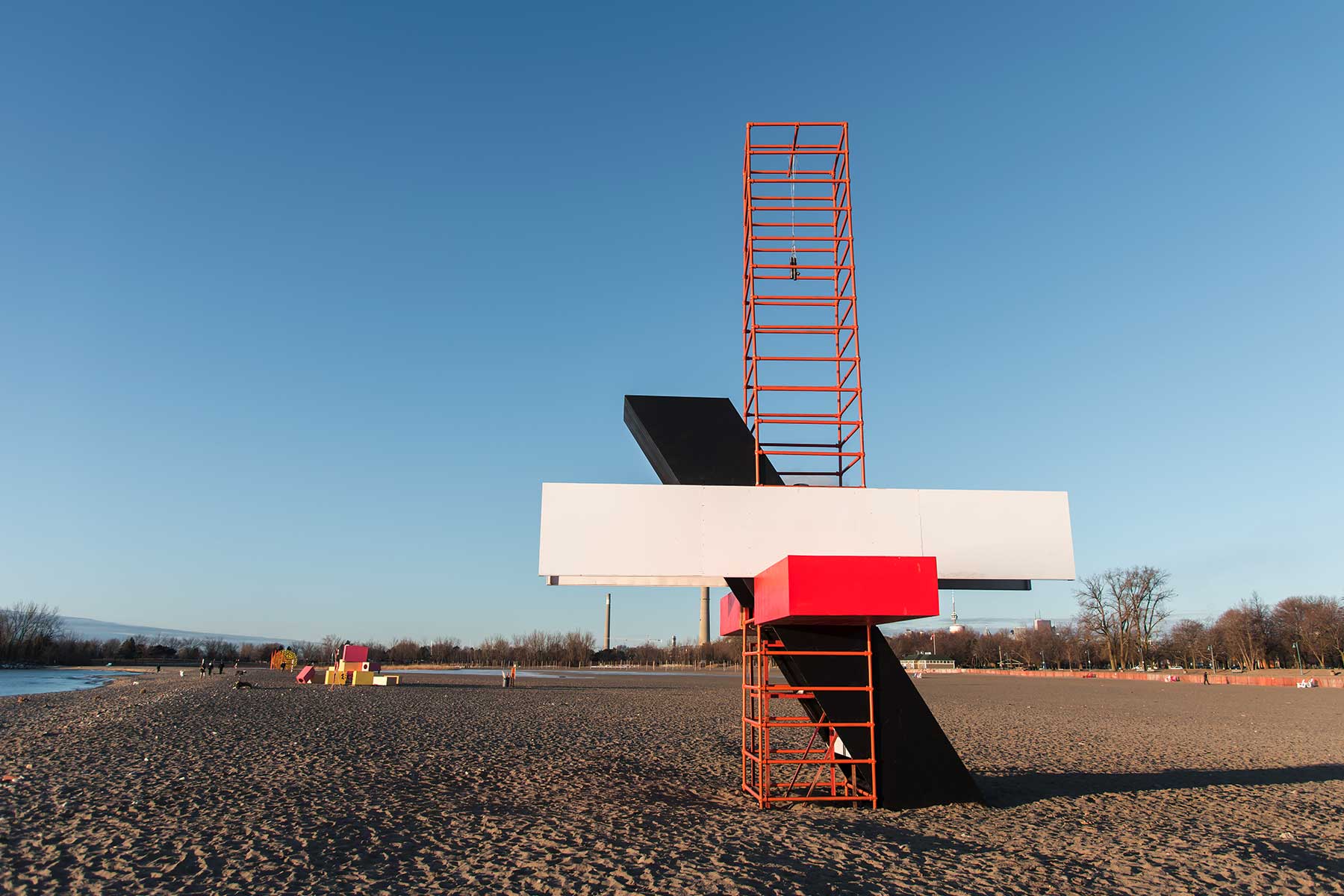
Kaleidoscope of the Senses, from Charlie Sutherland of UK-based architecture firm SUHUHA, was a comparably austere construction that turned the tallest station on the beach into a kind of minimalist nautical altar. An oblique black chimney was constructed to draw in the smell of oils that were implanted in the sand at its base. Metal chimes hung from the top of the station in a belltower-like effect. Climbing up into the space via the original station’s ladder — reader, I didn’t — you could sit on a red bench and look out onto an enclosed view of Lake Ontario lapping up on the sand.
One of the pieces was missing. Noodle Feed, by Austria’s iheartblob, was a sinewy, moveable, soft sculpture made of recycled sailcloth and filled with straw. People were encouraged to pile and burrow into the sculpture to create spaces to sit, lie, or play, and an augmented reality app allowed them to share pictures. According to a Winter Stations Facebook post, the “popularity” of the installation caused irreparable damage to it, and the stuffing had begun to spread onto the beach, so they had to remove it. One commenter mourned the installation, saying that it recalled a time when imagination was “unfettered by fears of litigation and injury.” Another one blamed parents for allowing their kids to treat art like a playground.
Photos from Noodle Feed’s heyday show people of all ages and their dogs strewn across the installation’s malleable surfaces. The piece serves as an accidental monument to the kind of unguarded, porous, squishy interactions with strangers that we’re leaving behind, at least for now. ■




